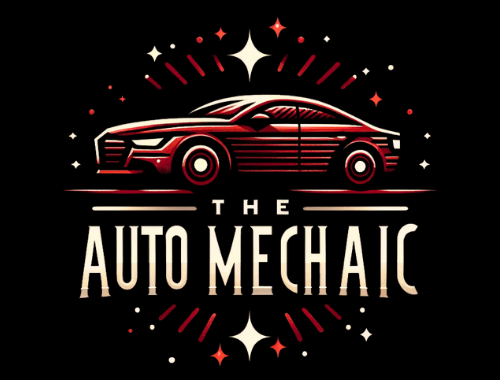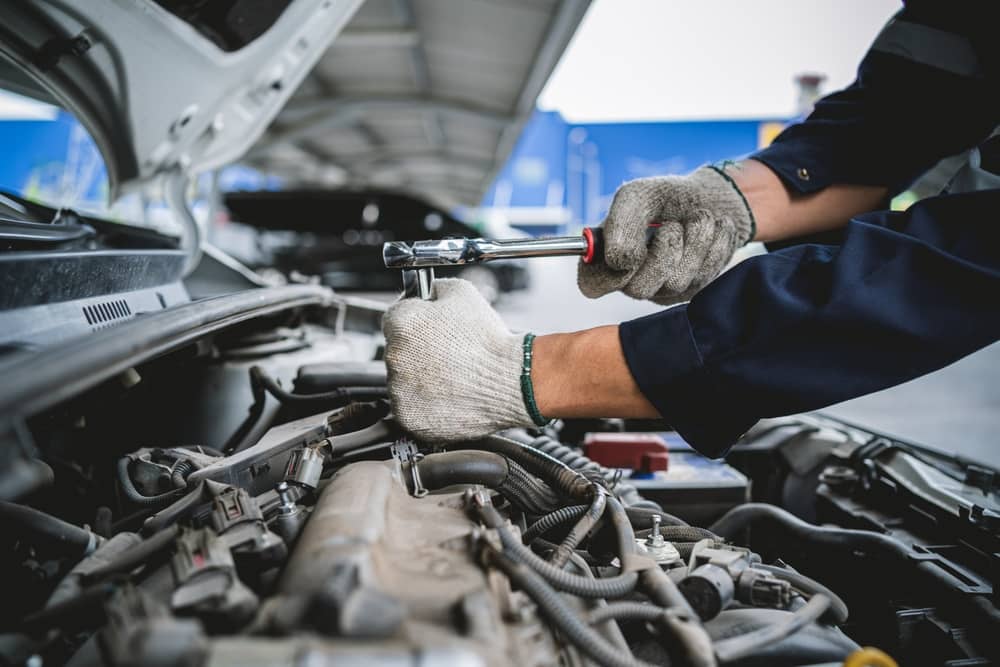Looking after your car for proper maintenance is a great way to prevent the Ford V10 problems. Despite the regular service and best efforts, some glitches might arise out of nowhere. In such conditions, the user wonders whether to fix it or seek professional assistance.
However, taking your car to a mechanic whenever an issue occurs is not budget-friendly. There are many ways to fix the problems in the Ford V10 engine.
Most Common Ford V10 Engine Problems
Before resolving Ford V10 problems, it is crucial to know their root cause. Eventually, this will help you better understand which part of the engine requires fixing. The 11 complications that your Ford V10 engine is more likely to encounter are mentioned below.
1. Malfunctioning of the Fuel Pump
Generally, the car tends to lose power upon acceleration if the fuel pump is malfunctioning or about to die. Yet before replacing it, one must check the MAF sensor. If the sensor is not in good shape, it will cause jerking and a loss of power in the engine. The MAF is a small sensor but plays a vital role in regulating the amount of air that goes into the engine.
Further, there could be more reasons behind the improper functioning of the fuel pump other than an MAF sensor. Fortunately, if you notice any of the symptoms above, you will be able to fix the fuel pump in due time.
2. Ford V10 Misfire Problems of the Engine
When the engine of your Ford V10 begins to misfire, examine the throttle body. It is a crucial part of the vehicle that adjusts the amount of air getting inside the engine. The car will stall if the throttle body response does not work well. Engine misfiring is also a result of zero combustion inside your vehicle’s engine.
Generally, it occurs when the engine’s cylinder cannot properly burn the mixture of air and fuel in the combustion chamber. Because of this, the car will jerk aggressively, thus rapidly increasing fuel consumption. Luckily, modern cars have a check engine light that begins to pop when the engine is misfiring. This light allows one to identify the problem quickly.
3. Defective Oil Cooler
An oil cooler is an essential vehicle component that aids in cooling down the engine. Yet resolving such a fault is not easy. One of the most noticeable signs of a faulty oil cooler is oil leakage. When this happens, oil will be in the coolant. An enlarged radiator is also a significant symptom of your oil cooler not working correctly.
Likewise, the faulty radiator signifies that the oil cooler’s service cycle expired a while ago. Consequently, the radiator will work in sync with the heat. More to say, the poor oil cooler can generate black smoke. In that case, the user has to shut off the car’s engine. Otherwise, it can cause severe damage to the engine.
4. Difficulty in Starting the Car
If you face trouble starting up your car, follow the steps below to resolve the issue.
- Step on the vehicle’s foot pedal
- Insert the key in the ignition and turn it in your direction
- Rotate the gearshift lever upwards and downwards
After the above steps, check whether the car is neutral or parked. If it is not in any of these modes, you will be unable to start it.
Other than this, if the vehicle is cranking, that is the actual problem. However, if that is not the issue, follow the following steps.
- Assess the power distribution fuse box and check the diagram with all the relays as well as the fuses
- Look for the starter relay and hold the finger counter to it
- Ask somebody to start up the car
- While doing so, it is vital to notice the relay movement
- If there is an absence of a relay move, replace the same
5. Blowing of Spark Plugs
Spark plugs tend to blow out after a specific period. Hence, one must change them as required. Yet, a significant obstacle is that most drivers or owners are unfamiliar with installing new spark plugs. Thus, they improperly fix them, which causes premature damage or wear in the spark plugs.
Blowing out the ignition coil is also necessary to eliminate the debris most drivers often forget. The debris tends to fall inside the engine upon pulling out the existing spark plugs, which is why one must apply anti-seize to the new spark plugs before fixing them.
Apart from that, the spark plugs must be torqued according to the owner’s instruction manual. These things keep the spark plugs in good condition, thereby reducing the chances of malfunctioning. If the spark plugs are out of service, you will have to take them out and set up new ones.
6. Stalling of the Car
One of the most common Ford V10 problems is stalling. In such a scenario, check the vehicle’s battery. The car will sputter while running if the battery is dead or about to die. Eventually, a defective fuel pump can lead to power loss.
When the fuel pump becomes defective, the vehicle fails to maintain a consistent speed, resulting in stalling. In addition, the condition of the air filter must be assessed and ensure that it is immaculate. If the air filter is dirty or damaged, it will not filter out the dirt particles and other impurities reaching the engine.
7. Rough Idling
Rough idle depicts that there is something wrong with the coil pack. Nevertheless, there are a few ways to determine whether the coil pack is the culprit. A simple way to determine the malfunctioning of coil packs is engine misfiring.
Generally, the car’s engine will misfire if there is damage to the coil pack. Likewise, the vehicle would not start quickly even if the single-coil pack became faulty. Unplug the coil pack and ensure a click while putting them back. By doing so, you will also be able to check the condition of the pins. Usually, the coil packs go through daily heat exposure. Because of this, they can get damaged.
8. Playing Up of Starter
One of the most challenging Ford V10 problems is related to the starter. Moreover, replacing the old starter with a new one is not a feasible option. Initially, start up the vehicle, and the dashboard will blaze, yet the engine will not start.
Additionally, you will notice that the starter is overheated, and white smoke is coming out of the car. In general, this is a sign that the driver has made repetitive attempts to start up the car’s engine. If the starter is not working, examine the relay present on the fuse box and replace it if needed.
9. Slight Jerking of the Engine
If your car’s engine is jerking a bit, the reason could be a defective fuel filter. You can easily replace the filter to fix the problem. Though you can also clean the filter, getting a new one is also an affordable option.
10. Leakage in Intake Manifold
Pop the vehicle’s hood and take out the intake manifold. There will be a coolant in the downward direction of the intake manifold. Undoubtedly, it is not a good sign and arises due to leakage in the intake manifold gasket. A gasket has a concealing of rubber all around it.
If the rubber is torn or peels out, it will release the coolant. A good option is to replace the gasket. There is a secondary gasket between the manifold and the aluminum housing. If that also stops working, replace the faulty piece or change the plastic intake.
11. Oil inside the Coolant
Sometimes, a poor head gasket can cause oil to get inside the coolant. Replacing the head gasket is not a wise option. So, before reaching any conclusion, check the functioning of the oil cooler, as it can also be the culprit.
Frequently Asked Questions (FAQs) for Ford V10 Problems
Ford v10 life expectancy: What is the life cycle of the Ford V10’s engine?
A healthy and faultless engine typically lasts around 200,000 miles without any trouble. However, to achieve this milestone, the engine must be maintained, and regular service is also essential.
Is it safe to drive with a defective coil pack?
Yes, you can drive with a poor coil pack, but it is never recommended. A poor coil pack can adversely impact the engine, causing the car to stall while driving. In the long term, it can damage the whole engine.
What is the cost of rebuilding the engine of the Ford V10?
If the engine is not working despite all your efforts to fix the issue, engine rebuilding is the only option. On average, the cost of replacing a Ford V10 engine would be approximately $1,400-$3,400. The cost will typically vary according to the quality of the parts.
Is a lousy oil cooler responsible for causing oil in the coolant?
Although it is a rare condition, a faulty oil cooler can mix the coolant with the engine oil. Consequently, it can contaminate the system, greatly affecting the engine’s performance.
Watch this video on YouTube:
Conclusion
If you face any Ford V10 problems, consider the information mentioned above. Ultimately, it will help you repair minor issues by yourself. Moreover, do not overlook the alarming signs of the engine. Lay more emphasis on the timely service of the car to keep it in excellent condition. You can easily overcome engine glitches by applying a little bit of experience with sound knowledge.

Bruce William is a professional content writer and vehicle engineer with extensive car maintenance and repair knowledge. His expertise spans all vehicle parts, offering practical solutions for various automotive issues. Bruce provides valuable insights through his website articles to help readers maintain their cars for optimal performance and longevity.

